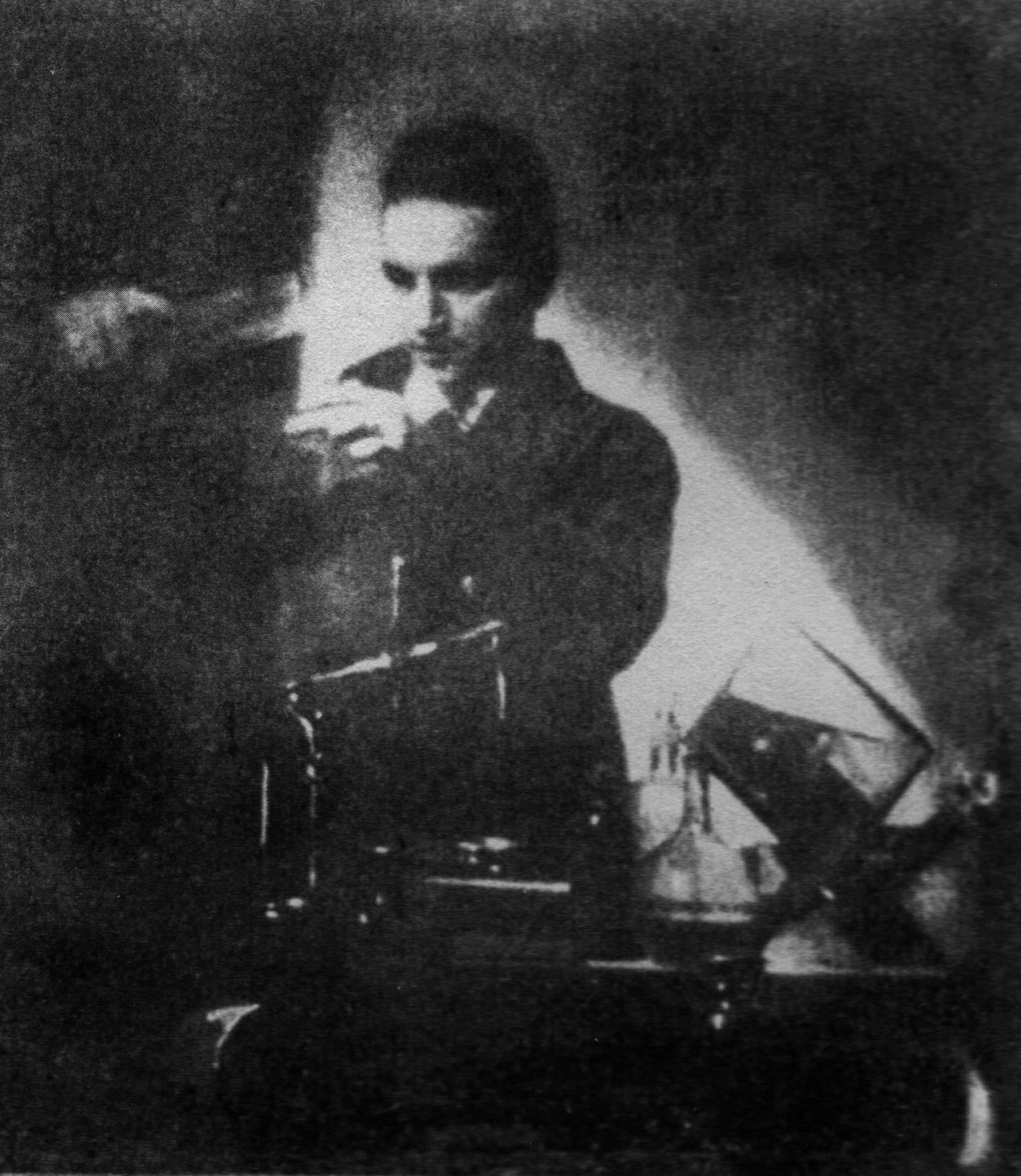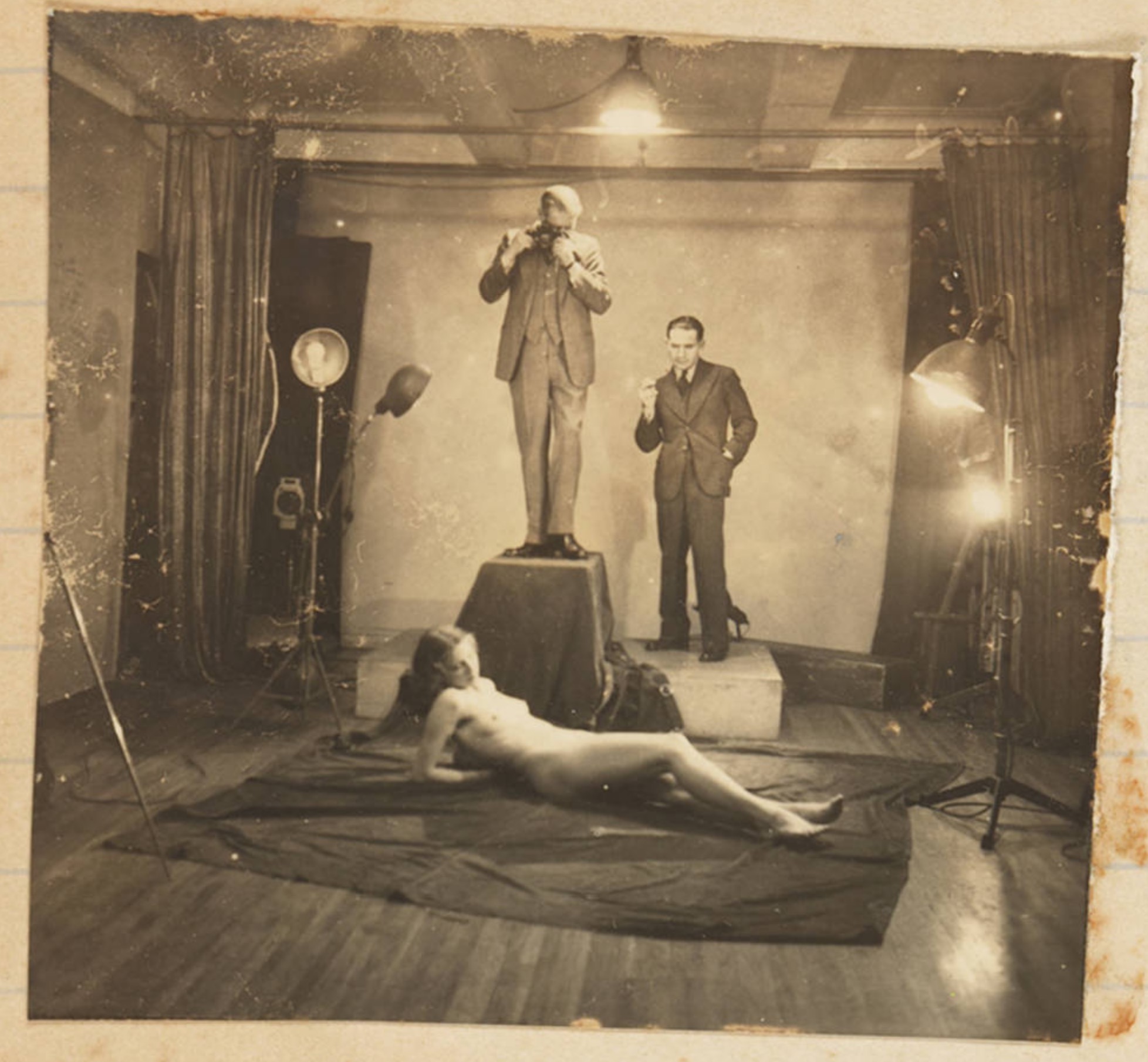Archive
Leonid Skvirsky
- Leonid
- Skvirsky
Leo Skvirsky; Леонид Владимирович Сквирский
- 15-09-1902
- 06-09-1969
- Atlanta (US)
- PhotographerIllustrator
Leonid Skvirsky was one of the most successful photographic artists in Shanghai. His experimental take on lighting and staging of the models ensured him critical acclaim, awards in international competitions and patronage of the elites.
Word Count: 35

Vladimir Zhiganov. Russkie v Shanghai (Russians in Shanghai), Shanghai 1936. Sam Sanzetti, Portrait of Leonid Skvirsky at work, photography. 
Victor Sassoon (with a camera), Leonid Skvirsky and model Lulah Thompson, in Skvirsky’s studio, 23 January 1935 (© DeGolyer Library, Southern Methodist University). 
Sam Sanzetti and Leonid Skvirsky, portraits of Shanghai society women, Shanghai Sunday Times, 19 February 1935. 
Stamp of Skvirsky Studio (© author’s collection). Zhiganov, Vladimir. Russkie v Shanghae (Russians in Shanghai). Shanghai, 1936.
Kradin, Nikolay. Russie khudozhniki v Kitae. 236 personaliy (Russian artists in China. 236 personalities). Isskustvo i kultura Priamuria, 2 (10), 2011.
Loewinsohn, Joseph. “Linking Shanghai and Atlanta.” Atlanta Constitution Sunday Magazine, 24 April 1938.Word Count: 36
Harbin, China (1904–1932); Shanghai, China (1932–1938)
413 Hamilton House (now 170 Jiangxi Zhong Lu, Huangpu Qu) (studio); 153 Nanking Road, International Settlement (now Nanjing Road, Huangpu Qu) (studio) Shanghai
- Shanghai
- Katya Knyazeva. "Leonid Skvirsky." METROMOD Archive, 2021, https://archive.metromod.net/viewer.p/69/2952/object/5138-11320448, last modified: 08-05-2021.
-
Semion Markovich LifshitzPhotographerShanghai
Sam Sanzetti was a precocious photographer and portrait artist, whose signature style came to define the aesthetic of the Shanghai bourgeoisie. The portraits produced in Sanzetti Studio, masterfully retouched and delicately hand-tinted, reflected the growing fascination with Hollywood.
Word Count: 38
Victor SassoonEntrepreneurShanghaiVictor Sassoon was a descendant of the Baghdadi Jewish Sassoon merchant family. He contributed significantly to a real estate boom in Shanghai in the 1920s and 1930s and helped European Jews in the Shanghai Ghetto. An ambitious amateur photographer, he produced many images of people and events of the time.
Word Count: 50
HLAM – Society for Artists, Writers, Entertainers and MusiciansAssociationShanghaiAs Shanghai’s largest and most popular Russian émigré association focused loosely on art, HLAM provided a platform for weekly encounters between the self-professed bohemians and a general audience. The HLAM evenings included theatre scenes, comic routines, dance numbers and poetry readings.
Word Count: 42
Lyceum TheatreBuildingShanghaiThe new Lyceum Theatre was designed in an eclectic style by British architects Davies & Brooke and opened on 5 February 1931.
Word Count: 20